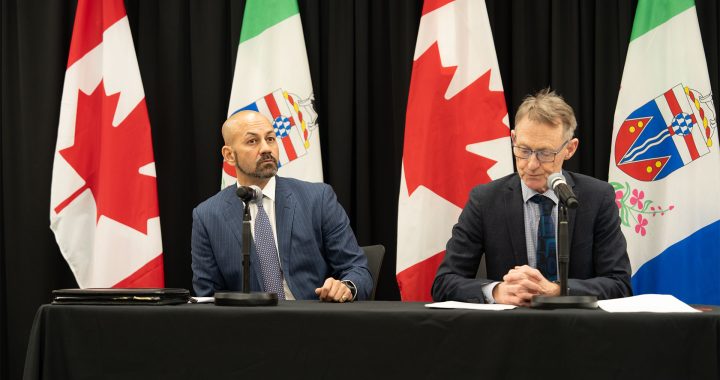Jorge Barrera
APTN National News
The Canadian military’s counter-intelligence branch is keeping mum on whether intelligence from the U.S. about Akwesasne formed part of several “Threat Information Collection (TIC)” reports that mentioned the Mohawk community between 2012 and 2015.
Capt. Travis Smyth, spokesperson for the Canadian Forces Intelligence Command, said Monday the military’s National Counter Intelligence Unit does not conduct direct surveillance of Akwesasne, a Mohawk community straddling the Canada-U.S. border. Smyth said the military relies on intelligence gathered by regional and local police authorities under “sharing agreements.”
When APTN National News pressed Smyth on whether any of the intelligence on Akwesasne came from U.S. sources, the public affairs officer said he couldn’t comment on the question.
“That, I can’t actually speak to,” said Smyth, in an interview Monday. “It is widely known that Canada is part of the ‘Five-Eyes’ info-sharing community.”
Several TIC reports were released to APTN last week under the Access to Information Act.
One of the TIC reports from 2012—which discussed Akwesasne as a potential threat source for the planned docking of three warships in Cornwall, Ont.—was shared among the Five-Eyes. The Five-Eyes refers to allies Canada, U.S., Great Britain, New Zealand and Australia which are part of an intelligence sharing arrangement.
Akwesasne, which sits about 120 kilometres west of Montreal, straddles the Quebec-Ontario-New York State borders.
U.S. Homeland Security, U.S. Border Patrol and the Drug Enforcement Administration actively monitor the U.S. side of Akwesasne primarily targeting human smuggling and marijuana shipments heading south.
The Canada Border Services Agency, RCMP, Surete du Quebec and the Ontario Provincial Police all keep tabs on Akwesasne, which is viewed as a high-traffic smuggling zone because of its geographical location.
While some of the military’s counter-intelligence TIC reports listed Akwesasne under headings like, “Sabotage by Criminals/Terrorists” and “Terrorism,” Smyth said the military has never found links between terrorism and Akwesasne.
“The Department of National Defence and the Canadian Armed Forces has not linked any potential terrorist activity with the Akwesasne Mohawk reserve,” said Smyth.
Smyth said the repeated mention of Akwesasne in the ITC reports does not mean the military has the community under active surveillance.
“Akwesasne is not under surveillance,” said Smyth.
Smyth said the TIC reports, which also mentioned last year’s Valentine’s Day murdered and missing Indigenous women’s vigils as a possible source of “extremism,” are compiled in response to specific issues facing the Canadian military.
“The Canadian Forces National Counter Intelligence Unit…is responsible for identifying, investigating and countering threats to the security of the DND/CAF personnel, property, material and information posed by foreign intelligence services, individuals and groups engaged in terrorism, espionage, sabotage subversion or organized criminal activities impacting DND/CAF security,” said Smyth, in an emailed statement sent to APTN. “The Canadian Forces National Counter Intelligence Unit routinely exchanges information with local police departments and other agencies to stay abreast of developing issues that may potentially impact military personnel or infrastructure if called upon to provide military support.”
@JorgeBarrera









